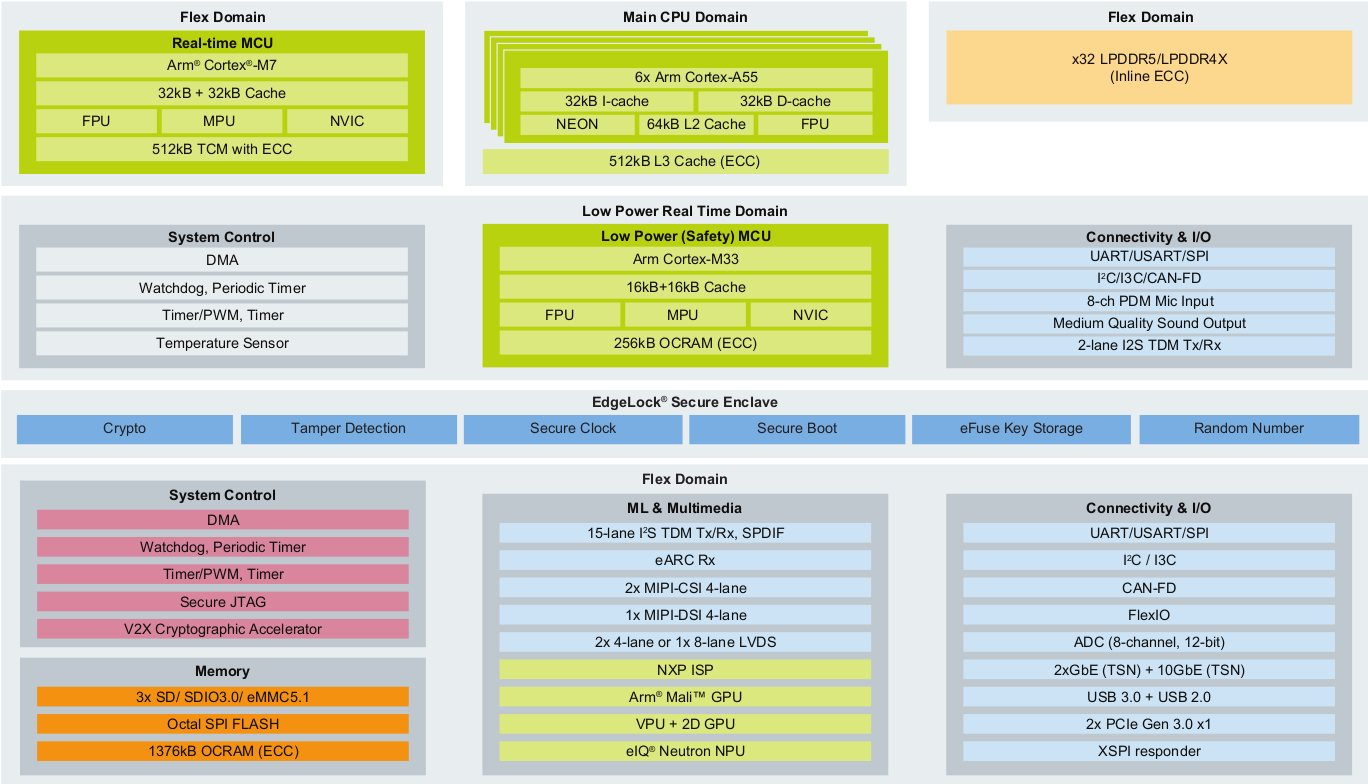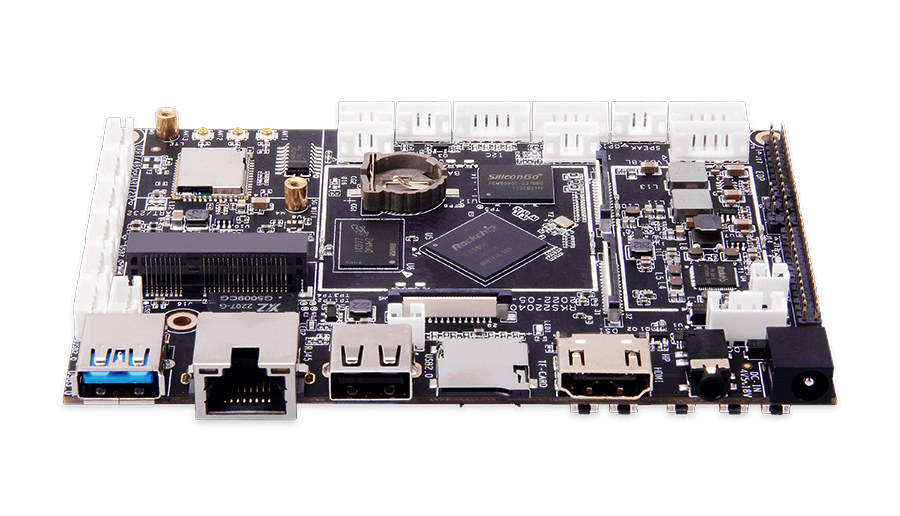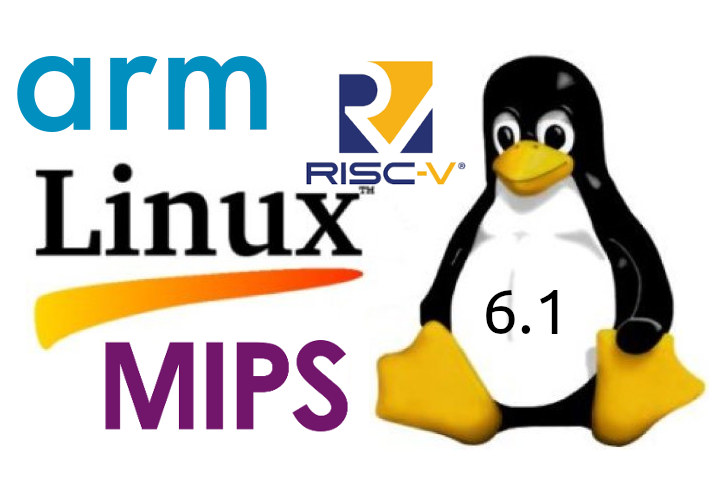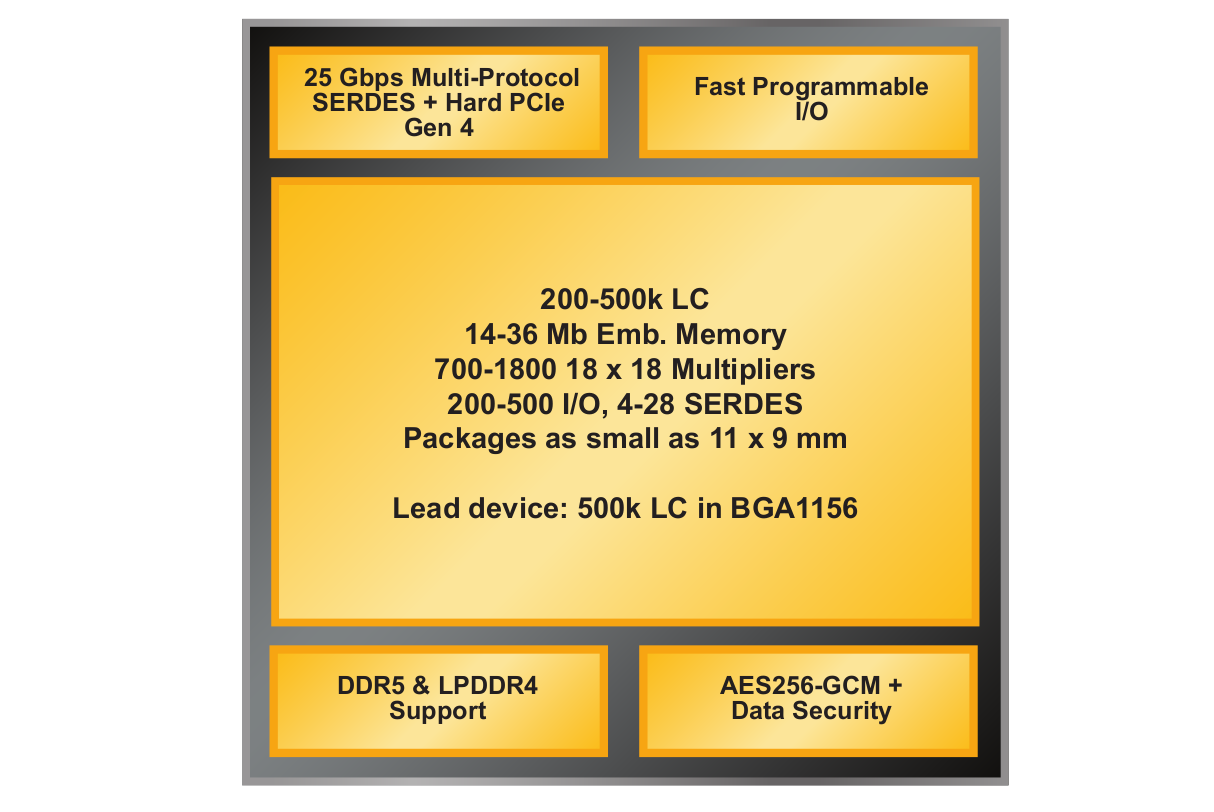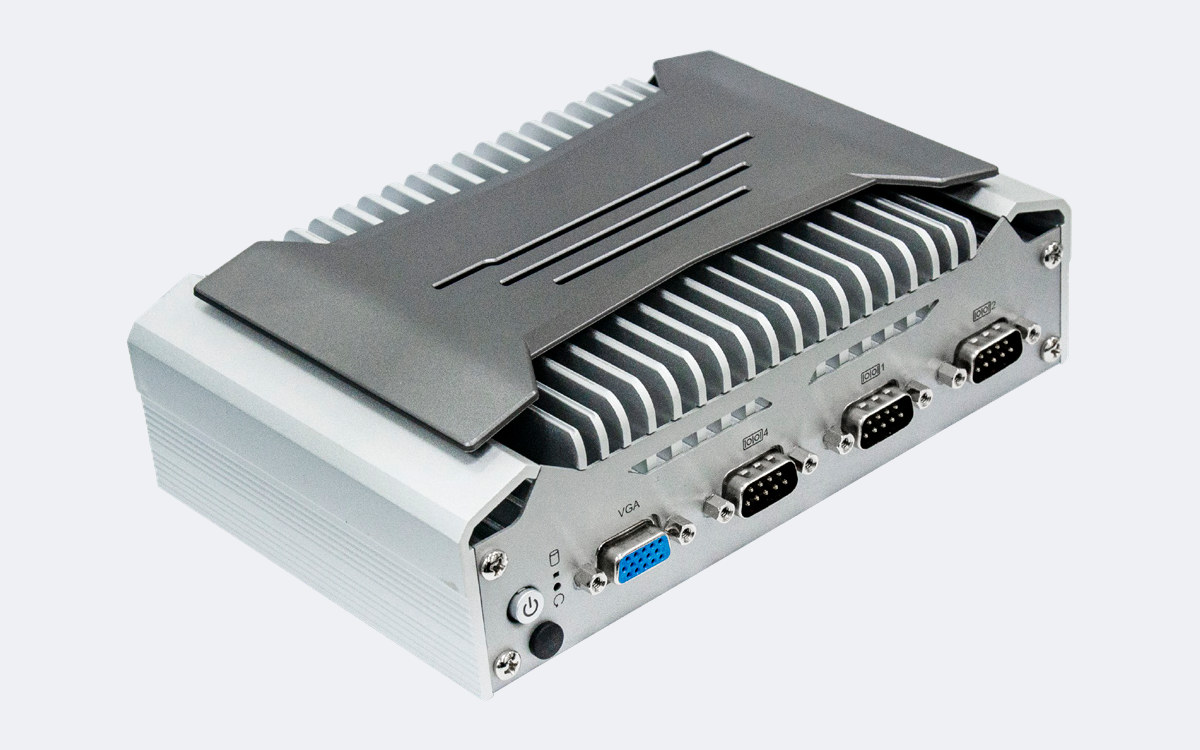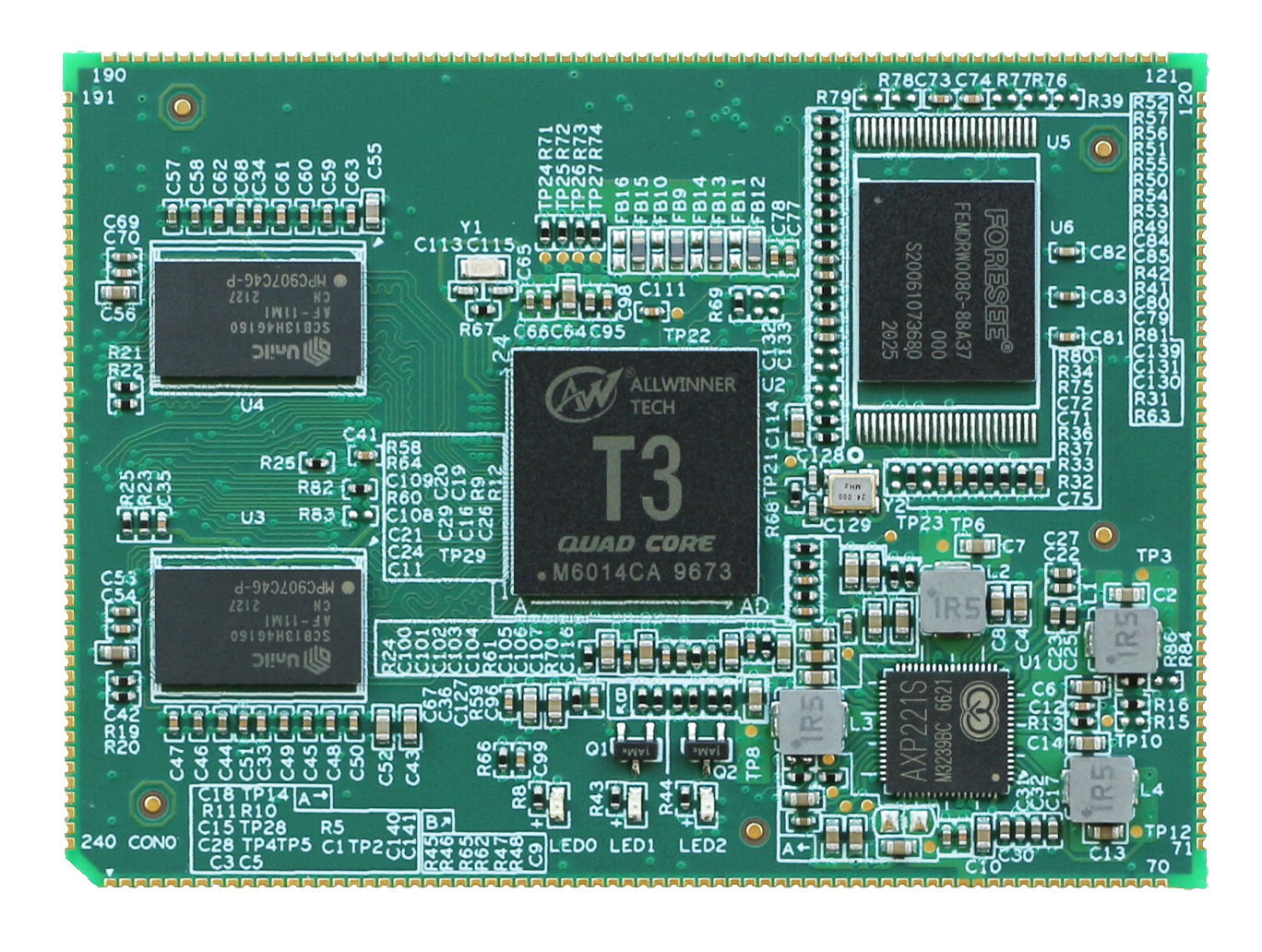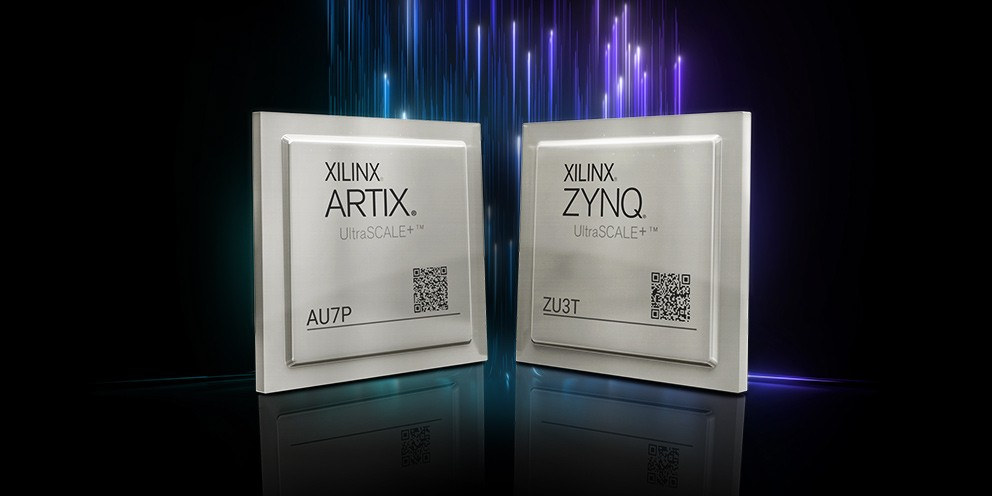You may soon be able to get true global coverage even in remote areas thanks to Qualcomm Snapdragon Satellite which will offer pole-to-pole coverage and two-way messaging for emergency use, SMS texting, and other messaging applications. Qualcomm made this possible through a partnership with Iridium to bring satellite-based connectivity to next-generation premium Android smartphones starting with devices based on Snapdragon 8 Gen 2 Mobile Platform, while emergency messaging support was done in collaboration with Garmin. You’ll just need to point your phone to the sky to send and/or receive messages, and the connection should take place within a few seconds. Note it can only be used for text, and the bandwitdh would not be sufficient for audio, pictures, and videos. The solution relies on Snapdragon 5G Modem-RF Systems such as the Snapdragon X70 modem to connect to the Iridium low-earth orbit satellite constellation using the L-band spectrum (1 to 2 […]
NXP i.MX 95 processor features Cortex-A55, Cortex-M33, and Cortex-M7 cores, eIQ Neutron NPU
NXP i.MX 95 is an upcoming Arm processor family for automotive, industrial, and IoT applications with up to six Cortex-A55 application cores, a Cortex-M33 safety core, a Cortex-M7 real-time core, and NXP eIQ Neutron Neural Network Accelerator (NPU). We’re just only starting to see NXP i.MX 93 modules from companies like iWave Systems and Forlinx, but NXP is already working on its second i.MX 9 processor family with the i.MX 95 application processor family equipped with a higher number of Cortex-A55 cores, an Arm Mali 3D GPU, NXP SafeAssure functional safety, 10GbE, support for TSN, and the company’s eIQ Neutron Neural Processing Unit (NPU) to enable machine learning applications. NXP i.MX 95 specifications: CPU Up to 6x Arm Cortex-A55 cores with 32KB I-cache, 32KB D-cache, 64KB L2 cache, 512KB L3 cache with ECC 1x Arm Corex-M7 real-time core with 32KB I-cache, 32KB D-cache, 512KB TCM with ECC 1x Arm Cortex-M33 […]
Geniatech DS-3566 digital signage board is powered by a Rockchip RK3566 SoC
Geniatech DS-3566 is a board based on Rockchip RK3566 designed for digital signage applications with a low-profile, multiple video interfaces such as HDMI, LVDS, eDP, and MIPI DSI, and plenty of headers and connectors for expansion. The single board computer ships with up to 8GB RAM, 128GB eMMC flash, and supports Gigabit Ethernet, WiFi 5, Bluetooth 4.1, as well as cellular connectivity as an option. Some of the interfaces available through connectors include RS232, RS485, CAN Bus, I2C, SPI, etc… Geniatech DS-3566 specifications: SoC – Rockchip RK3566 quad-core Arm Cortex-A55 processor @ 1.8 GHz with Arm Mali-G52 EE GPU, 0.8 TOPS NPU System Memory – 2GB to 8GB LPDDR4 Storage – 16GB to 128GB eMMC flash, MicroSD card slot Video Interfaces 1x HDMI 2.1 up to 4Kp60 1x LVDS header and backlight header 1x eDP header and backlight header 1x 4-lane MIPI DSI connector Camera – 1x 4-lane MIPI CSI […]
Linux 6.1 LTS release – Main changes, Arm, RISC-V and MIPS architectures
Linus Torvalds announced the release of Linux 6.1, likely to be an LTS kernel, last Sunday: So here we are, a week late, but last week was nice and slow, and I’m much happier about the state of 6.1 than I was a couple of weeks ago when things didn’t seem to be slowing down. Of course, that means that now we have the merge window from hell, just before the holidays, with me having some pre-holiday travel coming up too. So while delaying things for a week was the right thing to do, it does make the timing for the 6.2 merge window awkward. That said, I’m happy to report that people seem to have taken that to heart, and I already have two dozen pull requests pending for tomorrow in my inbox. And hopefully I’ll get another batch overnight, so that I can try to really get as […]
Lattice Avant mid-range FPGA platform features up to 500K logic cells, 25 Gbps SERDES, Hard PCIe Gen4
Lattice Avant is a new low-power and small form factor mid-range FPGA platform, manufactured with a 16nm FinFET process, and equipped with 25 Gb/s SERDES, hardened PCI Express, external memory PHY interfaces, a high DSP count, and a security engine. Lattice Semi is better known for its entry-level FPGAs such as the iCE40 which is popular in the community thanks to low-cost hardware and support for open-source tools, but the Avant platform marks the company’s entry into the mid-range FPGA market, defined by chips with 100k to 500k logic cells (LCs). Lattice Avant highlights: FPGA fabric – 200K to 500K logic cells up to 350 MHz DSP – 700 to 1,8000 18×18 multipliers @ up to 650 MHz to support the latest AI algorithms Memory 14-36 Mbit embedded memory up to 650 MHz DDR3L/DDR4/LPDDR4 and DDR5 support I/Os 4x to 28x 25 Gbps multi-protocol SERDES Hard PCIe Gen4 200 to […]
DFI EC70A-TGU embedded computer promises long-term support until 2035 (at least)
Some industries require long-term support of hardware, and DFI’s EC70A-TGU rugged embedded computer could fit the bill as the Tiger Lake IOTG processor used in this model has a 15-Year CPU life cycle guaranteeing availability until Q3 2035. The fanless computer is equipped with 8GB RAM, supports M.2 NVMe SSD storage, also well M.2 expansion slots for 5G modules, features HDMI and VGA video output, four serial DB3 ports, and offers up to four Ethernet ports and up to six USB ports through three SKUs with a different number of USB and Ethernet ports. DFI EC70A-TGU specifications: Tiger Lake UP3 “IoTG” SoC (one or the other) @ 1.5GHz to 4.4GHz depending on SKU Embedded Intel Core i7-1185G7E quad-core processor with Iris Xe graphics; TDP: 28W Intel Core i5-1145G7E quad-core processor with Iris Xe graphics; TDP: 28W Intel Core i3-1115G4E dual-core processor with Intel UHD graphics; TDP: 28W Industrial-grade Intel Core […]
Allwinner T3 automotive-grade processor powers industrial-grade SoM
Allwinner T3 is a quad-core Cortex-A7 automotive-grade processor that supports a wide industrial temperature range of -40°C to +85°C. After comparing the specifications of Allwinner T3, I think it is the same as Allwinner A40i, as Allwinner has different business units and the T-series is for the automotive-grade market, while the A-series has historically been for the tablet market, but is now also used in the industrial-grade market. Tronlong SOM-TLT3 and SOM-TLT3-B are Allwinner T3 system-on-modules (SoM) of Allwinner T3. Both modules have basically the same specifications but the SOM-TLT3 comes with castellated holes for soldering to the carrier board, while the SOM-TLT3-B features board-to-board connectors. Tronlong SOM-TLT3 / SOM-TLT3-B specifications: CPU – Allwinner T3 quad-core Arm Cortex-A7 @ 1.2 GHz with 32KB L1 I-cache + 32KB L1 D-cache, 512KB L2 cache. GPU – Arm Mali-400 MP2 with support for OpenGL ES 1.1/2.0, Open VG 1.1 Memory – 1/2GByte DDR3 […]
AMD unveils low-cost Artix UltraScale+ AU7P FPGA and Zynq UltraScale+ ZU3T MPSoC
AMD has added two new low-cost, low-power members to its UltraScale+ family with the Artix UltraScale+ AU7P FPGA and the Zynq UltraScale+ ZU3T MPSoC. Both devices are manufactured with the 16nm FinFET process and offer entry points to the transceiver-based UltraScale+ family with features such as high I/O-to-logic density, UltraRAM, DSP, and more. AMD Artix UltraScale+ AU7P FPGA The new AU7P FPGA is the smallest from the Artix UltraScale+ family with four 12.5Gbps transceivers, up to 82K system logic cells, 216 DSP slices, 4.9 Mbit RAM, and 248 I/Os. It is offered in a 10.5 x 8.5mm InFO package. The company says the chip provides up to 50% lower static power, 20% more I/O-to-logic ratio, and twice as many 3.3V HDIO compared to the AU10P device. The AU7P is designed for space-constrained and/or power-sensitive applications such as medical imaging, machine vision, professional cameras/monitors, and automotive radar/lidar. More details may be […]



